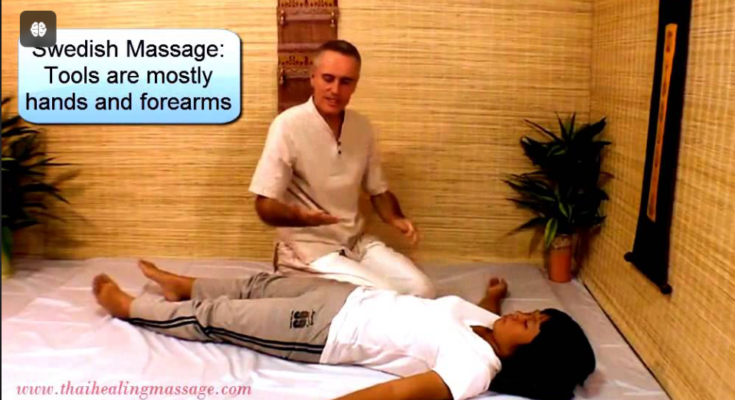Imagine sinking into a world where stress melts away, muscle tension dissipates, and your mind finds its serene sanctuary. Welcome to the enchanting realm of Swedish massage—a time-honored therapeutic practice that not only pampers your body but also nurtures your spirit. In this comprehensive guide, we’ll delve deep into the rich history, techniques, and myriad benefits of this beloved form of massage therapy. Whether you’re a seasoned spa-goer or a curious newcomer seeking relief from life’s daily grind, join us as we uncover how Swedish massage can rejuvenate your well-being and transform your approach to self-care. Get ready to unlock the secrets behind each soothing stroke—your journey to holistic healing begins now!
Introduction: What is Swedish Massage?
Imagine a world where stress melts away, tension releases, and your body feels rejuvenated. This is the magic of Swedish massage—a soothing experience that not only relaxes the muscles but also calms the mind. With its gentle strokes and rhythmic movements, this popular form of therapy offers a gateway to relaxation and healing. Whether you’re seeking relief from chronic pain or simply looking for a moment of peace in your hectic life, Swedish massage may hold the key to restoring balance within you. Let’s dive into this captivating journey through history, benefits, techniques, and everything else you need to know about this beloved practice.
History and Origins of Swedish Massage
Swedish massage traces its roots back to the early 19th century. It was popularized by a Swedish physiologist named Per Henrik Ling. He developed a system of physical training that combined various techniques aimed at enhancing health and well-being.
Ling’s approach integrated elements from ancient Greek and Roman practices, as well as traditional Chinese medicine. His methods emphasized movement and manipulation of muscles for improved circulation.
The technique gained traction across Europe before making its way to North America in the late 1800s. Practitioners saw it not just as a form of relaxation but also as an effective therapeutic tool.
Today, Swedish massage remains one of the most sought-after modalities worldwide. Its influence can be seen in many modern therapies, blending both tradition and innovation in healing touch.
Benefits of Swedish Massage for the Body and Mind
- Swedish massage offers a multitude of benefits for both the body and mind. It promotes relaxation, easing muscle tension while stimulating circulation. Improved blood flow can lead to better oxygenation of tissues.
- On a mental level, this type of massage reduces stress and anxiety. As the body relaxes, the mind often follows suit, creating a space for peace and clarity.
- Moreover, Swedish Massage Massage encourages emotional release as it can help alleviate feelings of frustration or sadness. The gentle strokes encourage mindfulness, allowing you to reconnect with your own body.
- In addition to these psychological perks, regular sessions may enhance flexibility and posture by loosening tight muscles. This holistic approach fosters an overall sense of well-being that resonates long after the session is over. Whether seeking relief from physical discomfort or looking to unwind mentally, Swedish massage serves as an effective remedy.
Techniques and Movements Used in Swedish Massage
- Swedish massage employs a variety of techniques that work harmoniously to soothe the body and mind. The most common movements include effleurage, petrissage, friction, tapotement, and vibration.
- Effleurage involves long, gliding strokes that warm up the muscles. This technique establishes a calming rhythm from the start.
- Petrissage follows with kneading motions that lift and roll muscle tissue. It promotes circulation and helps release tension from deeper layers.
- Friction focuses on specific areas of tightness using circular or transverse pressure. This targeted approach breaks down knots effectively.
- Tapotement introduces rhythmic tapping or chopping movements. These invigorate the muscles and stimulate nerve endings for an energizing boost.
- Finally, vibration consists of rapid shaking motions applied through hands or fingers. It brings relaxation while enhancing overall circulation in targeted regions.
- Each movement is tailored to provide a unique experience based on individual needs.
Preparing for a Swedish Massage Session
- Preparing for a Swedish massage session can enhance your overall experience. Start by arriving early to allow yourself time to relax and unwind. A few minutes of quiet can set the tone for your treatment.
- Dress comfortably, opting for loose-fitting clothing that you can easily remove if necessary. It’s also wise to avoid heavy meals right before your appointment, as this may distract from relaxation.
- Communicate with your therapist about any specific areas of tension or discomfort. This ensures they focus on what matters most to you during the session.
- Lastly, hydrate well in the hours leading up to your massage. Staying hydrated helps ease muscle tension and enhances circulation, making it easier for the therapist to work through tight spots effectively.
What to Expect During a Swedish Massage
When you arrive for a Swedish massage, the atmosphere is often calm and inviting. Soft music plays in the background, creating a serene environment that helps you unwind.
Your therapist will greet you and discuss any specific areas of tension or discomfort. This conversation is important to tailor the experience to your needs. Once on the massage table, you’ll be draped with a sheet or towel for privacy. The therapist uses warm oil or lotion for smooth movements across your skin.
Expect gentle kneading and long strokes as they work through muscle layers. You’ll likely feel relaxed yet invigorated as tension melts away.
Throughout the session, communication is key. Feel free to provide feedback on pressure levels or areas needing more attention. Your comfort should always come first during this restorative experience.
Post-Massage Care Tips
- After your Swedish massage, take a moment to relish the lingering sensations in your body. This is part of the healing process.
- Hydration is key. Drink plenty of water to help flush out toxins released during the massage. It aids recovery and keeps you feeling refreshed.
- Gentle movement can also be beneficial. A light stroll or simple stretches will enhance blood circulation without straining your muscles.
- Consider taking it easy for the rest of the day. If possible, avoid strenuous activities to let your body fully absorb the benefits of the treatment.
- Listen to your body’s cues as well. If you feel sore, apply a warm compress or take a soothing bath with Epsom salts for added relief and relaxation.
- Finally, indulge yourself with restorative practices like meditation or deep breathing exercises. They can further amplify tranquility and promote overall well-being after your session.
Common Misconceptions about Swedish Massage
Many people associate Swedish massage solely with relaxation. While it certainly promotes a sense of calm, its benefits extend far beyond just stress relief.
Some believe it’s only suitable for those who are athletic or physically fit. In reality, anyone can benefit from this therapy, regardless of their fitness level or age. Another common myth is that deep pressure equates to better results. However, Swedish massage focuses on long strokes and gentle kneading rather than intense force. Its effectiveness lies in the rhythm and flow of the techniques used.
Additionally, some think that all massages are painful experiences. This isn’t true for Swedish massage; most clients find it soothing and enjoyable rather than uncomfortable. Understanding these misconceptions can help individuals make informed choices about their wellness journeys without hesitation or confusion.
Alternatives to Swedish Massage Therapy
- If Swedish massage isn’t quite what you’re looking for, there are several alternatives that may suit your needs better.
- Deep tissue massage targets the deeper layers of muscles and connective tissue. It’s perfect for those with chronic pain or tension.
- Hot stone therapy uses heated stones placed on key points of the body to enhance relaxation and ease muscle stiffness. The warmth helps soothe soreness.
- Aromatherapy massage combines essential oils with traditional techniques, offering both physical and emotional benefits. The scents can uplift your spirit or calm your mind.
- For a more energetic approach, consider Thai massage. It incorporates yoga-like stretches alongside acupressure, focusing on flexibility and energy flow.
- Lastly, reflexology focuses on pressure points in the feet, hands, or ears to promote healing throughout the entire body. Each option provides unique advantages tailored to different preferences and conditions.
Conclusion: The Power of Touch in Healing.
The healing power of touch is profound. Swedish massage exemplifies this through its blend of techniques designed to promote relaxation and well-being. This therapy not only addresses physical discomfort but also nurtures mental health, providing a holistic approach to wellness.
As we’ve explored, the history of Swedish massage shows its deep roots in therapeutic practices that have evolved over centuries. The benefits are extensive—reduction in stress levels, improved circulation, and relief from muscle tension all contribute to an enhanced sense of self. Embracing these techniques can open pathways toward greater mindfulness and body awareness.
When preparing for a session or experiencing it for the first time, knowing what to expect can ease any apprehension you may feel. Post-massage care plays a crucial role too; staying hydrated and allowing your body time to adjust enhances the overall experience.




